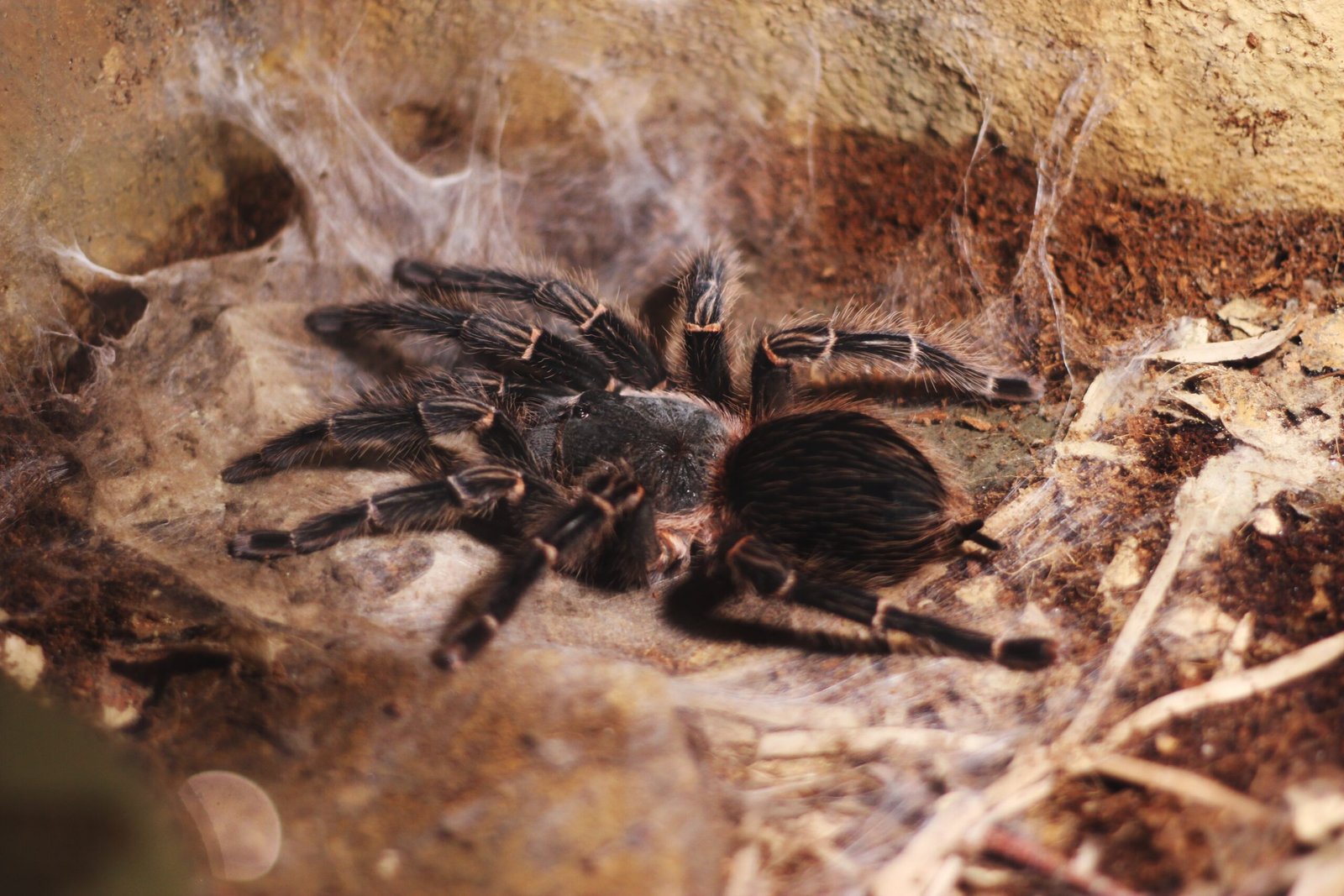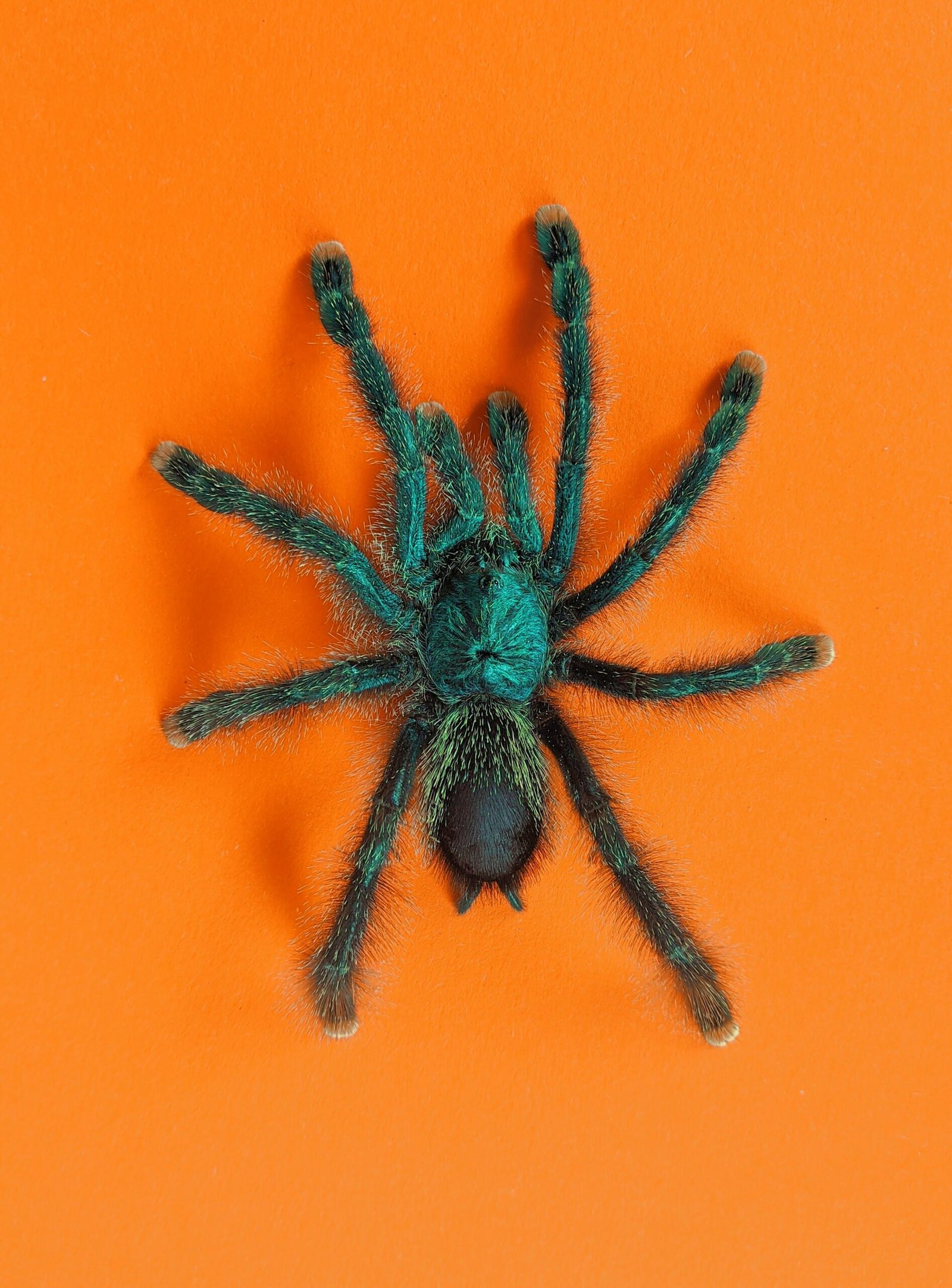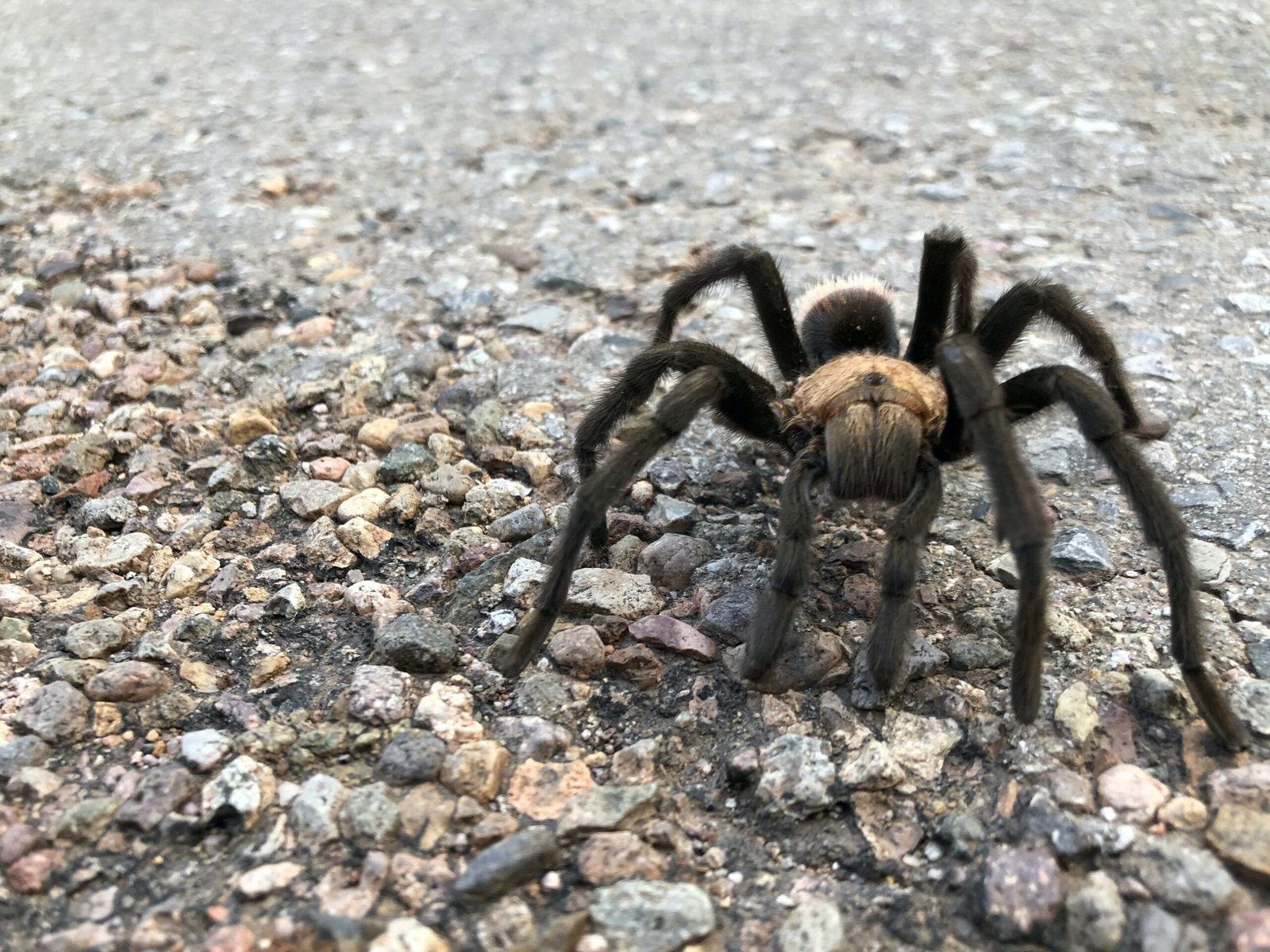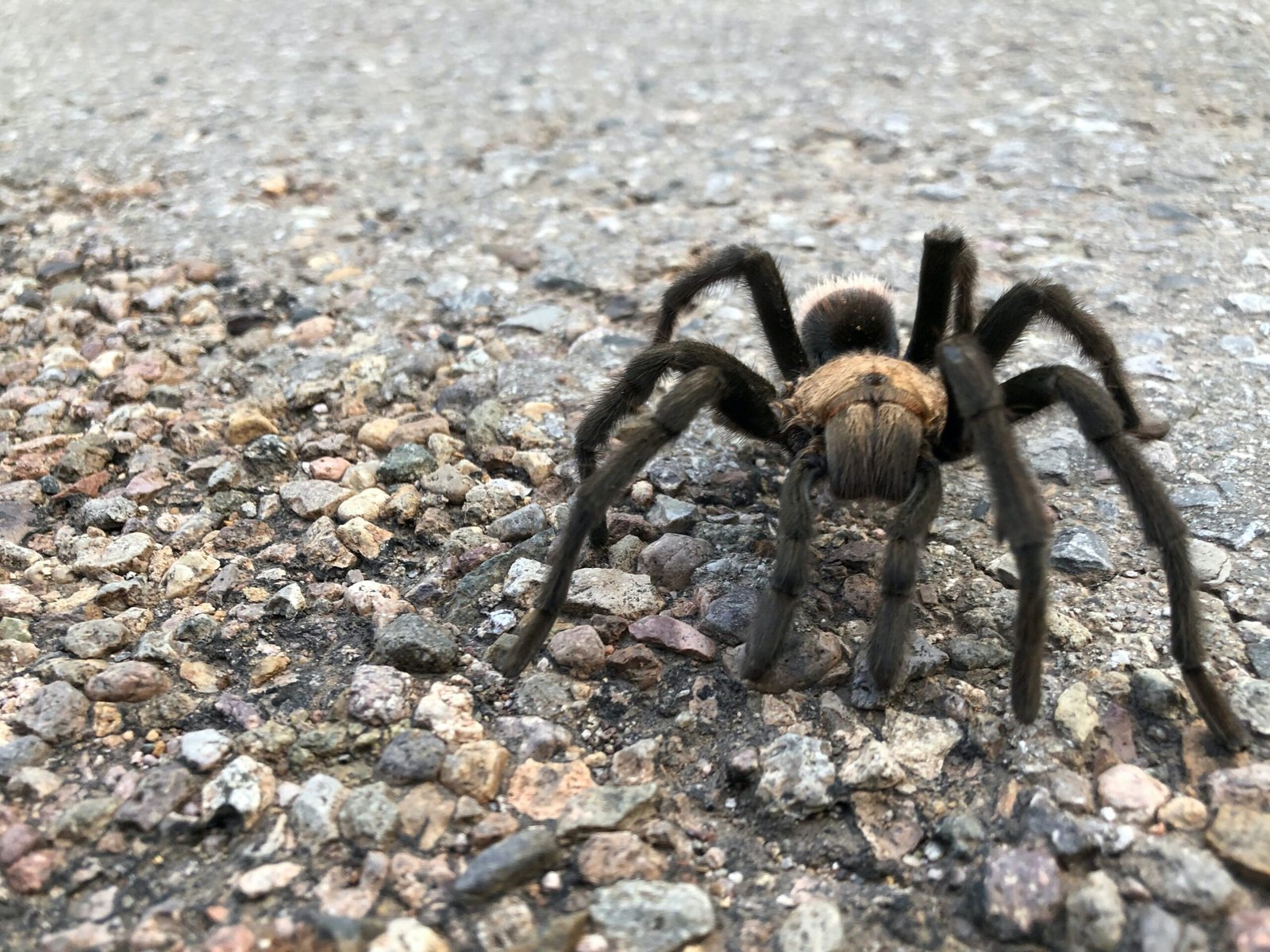Imagine keeping a Brazilian salmon pink bird-eating tarantula as a pet. Sounds intriguing, right? But before you embark on this arachnid adventure, you need to know how to create a suitable habitat for your eight-legged friend. In this article, we will explore the secrets of replicating the natural environment of the Brazilian salmon pink bird-eating tarantula in captivity. From the right substrate to the perfect temperature and humidity levels, we’ve got you covered. Get ready to create a cozy and comfortable home for your exotic pet!
Habitat and Climate
Description of Natural Habitat
The Brazilian salmon pink bird-eating tarantula is native to the Amazon rainforest in Brazil. Its natural habitat consists of lush tropical forests with dense vegetation, tall trees, and a prominent canopy. The forest floor is covered with fallen leaves, twigs, and other organic matter. This tarantula can also be found in marshy areas near rivers, as well as in grasslands and savannahs.
Temperature Range
In its natural habitat, the Brazilian salmon pink bird-eating tarantula experiences temperatures ranging from 75 to 85 degrees Fahrenheit (24 to 29 degrees Celsius) during the day. However, there can be a slight drop in temperature at night. It is important to replicate these temperature ranges in captivity to ensure the tarantula’s well-being and encourage natural behaviors.
Humidity Levels
The Brazilian salmon pink bird-eating tarantula thrives in high humidity environments, with levels ranging from 70% to 80%. The humidity is necessary for the tarantula to molt successfully and maintain healthy respiratory function. To replicate these conditions, it is crucial to provide a humid environment within their enclosure.
Native Vegetation
The natural habitat of the Brazilian salmon pink bird-eating tarantula is rich in vegetation. It is surrounded by a variety of tall trees, such as Brazil nut and Palisander rosewood, as well as smaller shrubs and plants. Fallen leaves, moss, and tree bark cover the forest floor, providing hiding spots and opportunities for web construction.
Temperature and Humidity
Optimal Temperature Range
To replicate the natural environment of the Brazilian salmon pink bird-eating tarantula, maintaining an optimal temperature range is crucial. Aim for temperatures between 75 and 85 degrees Fahrenheit (24 to 29 degrees Celsius) during the day. Nighttime temperatures can drop slightly, but it is essential to avoid drastic temperature fluctuations.
Avoiding Extreme Temperature Fluctuations
Extreme temperature fluctuations can be detrimental to the health of the tarantula. Sudden temperature drops or exposure to high temperatures can stress the spider, impacting its overall well-being and behavior. To prevent this, ensure proper insulation and choose a heating system that provides consistent warmth without creating hotspots within the enclosure.
Maintaining Humidity Levels
Humidity is a significant factor in the success of keeping the Brazilian salmon pink bird-eating tarantula in captivity. Maintaining humidity levels between 70% and 80% will help replicate their natural environment. This can be achieved through various methods, including misting the enclosure with water, providing a water dish, and using a hygrometer to monitor and adjust humidity levels as needed.

Lighting
Natural Light Exposure
In their natural habitat, Brazilian salmon pink bird-eating tarantulas experience filtered and diffused light due to the dense canopy of the rainforest. While replicating the exact lighting conditions can be challenging, it is essential to provide a day-night cycle for the tarantula. Exposing them to natural daylight indirectly can help simulate their natural environment, but direct sunlight should be avoided as it may cause overheating.
Artificial Lighting Considerations
To supplement natural light, artificial lighting can be used to provide a consistent photoperiod. LED or fluorescent lights with a color temperature of around 6500K can create a natural-looking daylight effect. The lighting duration should mimic the natural day-night cycle, with around 12 hours of light and 12 hours of darkness. Avoid using overly bright or harsh lighting, as it may stress the tarantula.
Substrate
Choice of Substrate
Choosing the right substrate is crucial to replicate the Brazilian salmon pink bird-eating tarantula’s natural environment. A combination of organic potting soil, coconut fiber, and peat moss can create a suitable substrate. These materials provide a soft, moisture-retaining base that mimics the forest floor found in their natural habitat.
Moisture Levels
The substrate should be kept slightly moist but not overly wet. This will help maintain the desired humidity levels within the enclosure. Regularly check the moisture content of the substrate by pressing it lightly with your fingertips. If it feels dry, misting the substrate with water can help increase humidity levels.
Substrate Depth
Provide a substrate depth of at least 3 to 5 inches (7.6 to 12.7 cm) to allow the tarantula to burrow and create a comfortable hiding spot. The Brazilian salmon pink bird-eating tarantula is known for its burrowing behavior, so providing adequate substrate depth is essential for their overall well-being and natural behaviors.

Enclosure Size and Structure
Optimal Enclosure Size
The enclosure size for the Brazilian salmon pink bird-eating tarantula should be spacious enough to allow the tarantula to move comfortably. A general recommendation is a 10-gallon tank (37.8 liters) for an adult tarantula, with larger enclosures preferred whenever possible. Having ample space enables the tarantula to exhibit natural behaviors such as webbing, climbing, and burrowing.
Ventilation and Airflow
Proper ventilation and airflow are crucial to prevent excessive condensation and mold growth within the enclosure. This can be achieved by providing ventilation holes on the sides or top of the enclosure, ensuring a steady exchange of fresh air without causing drafts or temperature fluctuations. Monitor the enclosure regularly to ensure optimal ventilation.
Escape-Proof Design
The enclosure should be escape-proof to prevent any accidents or harm to the tarantula. Use a secure lid or top closure to prevent the tarantula from escaping. This can be achieved by using a metal mesh or a lid that securely locks in place. Avoid gaps or spaces that the tarantula could squeeze through to ensure its safety.
Vegetation
Native Plants and Foliage
Replicating the native vegetation found in the Brazilian salmon pink bird-eating tarantula’s natural habitat can enhance their captive environment. Consider adding live plants that thrive in high humidity, such as pothos, bromeliads, or spider plants. These plants not only provide visual stimulation but also contribute to maintaining humidity levels within the enclosure.
Artificial Plants as Substitutes
If live plants are not feasible or preferred, artificial plants can be used as substitutes. Look for realistic and high-quality artificial plants that mimic the appearance and texture of natural foliage. This provides the tarantula with hiding spots, visual barriers, and opportunities for web construction, enhancing their overall well-being in captivity.

Water Source and Humidity
Providing a Water Dish
To replicate the natural environment of the Brazilian salmon pink bird-eating tarantula, provide a shallow water dish filled with clean, chlorine-free water. The dish should be large enough for the tarantula to drink from and, if necessary, submerge its pedipalps. Change the water regularly to ensure freshness and cleanliness.
Misting and Spraying
Misting the enclosure with water can help maintain humidity levels within the desired range. Use a spray bottle to mist the substrate, vegetation, and enclosure walls. Avoid spraying directly on the tarantula to prevent stress or discomfort. Regular misting sessions, especially during the warmer hours of the day, can create a more natural and humid environment.
Humidity Measurement and Control
Using a hygrometer is essential to monitor and control humidity levels accurately. Place the hygrometer in a central location within the enclosure to obtain accurate readings. Adjust misting frequency or the use of a humidifier based on the hygrometer readings to maintain humidity levels between 70% and 80% throughout the day and night.
Feeding Habits
Prey Selection
The Brazilian salmon pink bird-eating tarantula is known for its appetite and will feed on a variety of prey in the wild. In captivity, their diet primarily consists of appropriately sized feeder insects. Common prey options include crickets, cockroaches, mealworms, and locusts. It is essential to provide a varied diet to ensure a balanced nutritional intake for the tarantula.
Feeding Schedule and Frequency
Establishing a regular feeding schedule is crucial for the Brazilian salmon pink bird-eating tarantula’s health and well-being. Offer food items once every 7 to 10 days, adjusting the frequency based on the tarantula’s appetite and metabolic needs. Remove any uneaten prey items after 24 hours to prevent spoilage or unwanted pests within the enclosure.
Feeder Insects and Supplements
Feeder insects should be gut-loaded before offering them to the tarantula. Gut-loading involves feeding nutritious, gut-friendly foods to the insects to enhance their nutritional value. Dusting the feeder insects with a calcium supplement can also provide essential nutrients for the tarantula’s overall health and molting process. Consult a veterinarian or exotic pet specialist for specific dietary recommendations.

Enrichment Activities
Creating Hiding Spots
Create hiding spots within the enclosure to mimic the tarantula’s natural environment. Add appropriately sized cork bark, hollow logs, or other suitable materials that allow the tarantula to retreat and feel secure. Hiding spots are essential for the tarantula’s mental and physical well-being, reducing stress and promoting natural behaviors.
Branches and Climbing Structures
Providing branches and climbing structures within the enclosure offers opportunities for the tarantula to exercise and exhibit natural climbing behaviors. Choose sturdy branches or cork bark pieces that are securely anchored in the substrate. This allows the tarantula to explore its surroundings, construct webs, and perform arboreal behaviors.
Webbing and Burrowing Opportunities
The Brazilian salmon pink bird-eating tarantula is known for its web-building and burrowing behaviors. Create vertical and horizontal anchor points within the enclosure, allowing the tarantula to construct intricate webs. Additionally, provide enough substrate depth for the tarantula to burrow and create a comfortable retreat. These opportunities for natural behavior encourage the tarantula’s overall well-being and mental stimulation.
In conclusion, replicating the natural environment of the Brazilian salmon pink bird-eating tarantula in captivity requires careful attention to detail. Consider factors such as temperature, humidity, lighting, substrate, enclosure size, vegetation, water source, feeding habits, and enrichment activities to provide a suitable and enriched environment for this fascinating tarantula species. By closely mimicking their natural habitat, you can ensure the well-being and longevity of these remarkable spiders in captivity.
